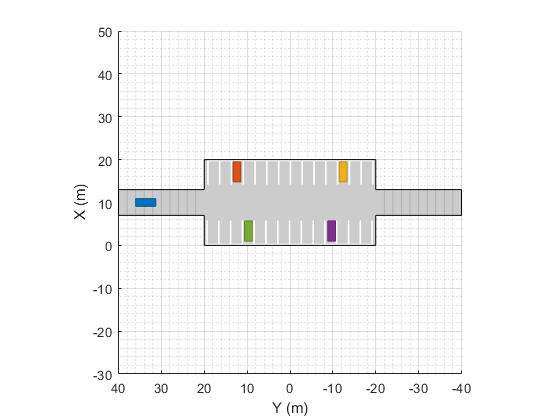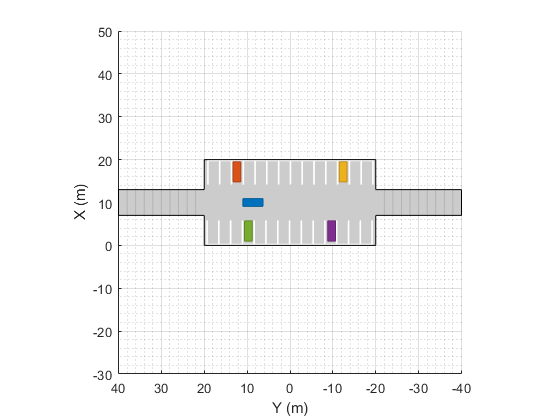parkingLaneMarkingVertices
Syntax
Description
[
returns the parking lane marking vertices plmv,plmf] = parkingLaneMarkingVertices(scenario)plmv and parking lane marking
faces plmf contained in driving scenario scenario.
The plmf and plmv outputs are in the world
coordinates of scenario. Use parking lane marking vertices and faces to
display lane markings using the laneMarkingPlotter function with a bird's-eye plot.
Examples
Input Arguments
Output Arguments
Algorithms
This function uses the patch function to define lane marking vertices
and faces.
Version History
Introduced in R2021b


